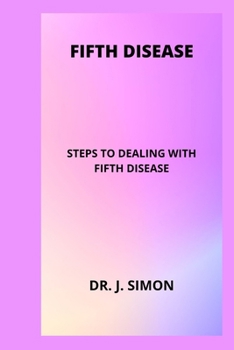Fifth Disease: Steps to Dealing with Fifth Disease
Erythema infectiosum, also referred to as Fifth Disease, is a frequent childhood ailment brought on by the parvovirus B19. This viral infection, which is named after the fifth place in a historical categorization of pediatric rashes, mainly affects youngsters, however it can strike people at any age. Fifth Disease is characterized by a characteristic "slapped cheek" rash and, in certain cases, joint discomfort, even though it is often moderate. Let's examine the salient features of this contagious illness.
A tiny single-stranded DNA virus, parvovirus B19 is a member of the Parvoviridae family. It is the cause of erythema infectiosum, sometimes known as the Fifth Disease. Human erythroid progenitor cells, which are the precursors of red blood cells, are the cells that this virus prefers to infect. The primary means of transmission for the highly contagious parvovirus B19 is respiratory droplets.
Apart from producing Fifth Disease, arthropathy, or inflammation of the joints, and severe anemia, especially in those with underlying hemolytic diseases, are other clinical problems linked to Parvovirus B19. It is noteworthy that the majority of Parvovirus B19 infections are minor and self-limiting, and that symptoms usually go away on their own without the need for special medical attention.
Term Uses and Historical Background
The Fifth Disease is referred to by a number of names that reflect its unique symptoms and historical background. Among the popular names are:
The infectious erythema
This is the medical term for Fifth Disease, and it's frequently used to refer to the infection's distinctive rash.
A tiny single-stranded DNA virus, parvovirus B19 is a member of the Parvoviridae family. It is the cause of erythema infectiosum, sometimes known as the Fifth Disease. Human erythroid progenitor cells, which are the precursors of red blood cells, are the cells that this virus prefers to infect. The primary means of transmission for the highly contagious parvovirus B19 is respiratory droplets.
Apart from producing Fifth Disease, arthropathy, or inflammation of the joints, and severe anemia, especially in those with underlying hemolytic diseases, are other clinical problems linked to Parvovirus B19. It is noteworthy that the majority of Parvovirus B19 infections are minor and self-limiting, and that symptoms usually go away on their own without the need for special medical attention.
Term Uses and Historical Background
The Fifth Disease is referred to by a number of names that reflect its unique symptoms and historical background. Among the popular names are:
The infectious erythema
This is the medical term for Fifth Disease, and it's frequently used to refer to the infection's distinctive rash.
Format:Paperback
Language:English
ISBN:B0CTCRVQB8
ISBN13:9798876920522
Release Date:January 2024
Publisher:Independently Published
Length:56 Pages
Weight:0.19 lbs.
Dimensions:0.1" x 6.0" x 9.0"
Customer Reviews
0 rating





